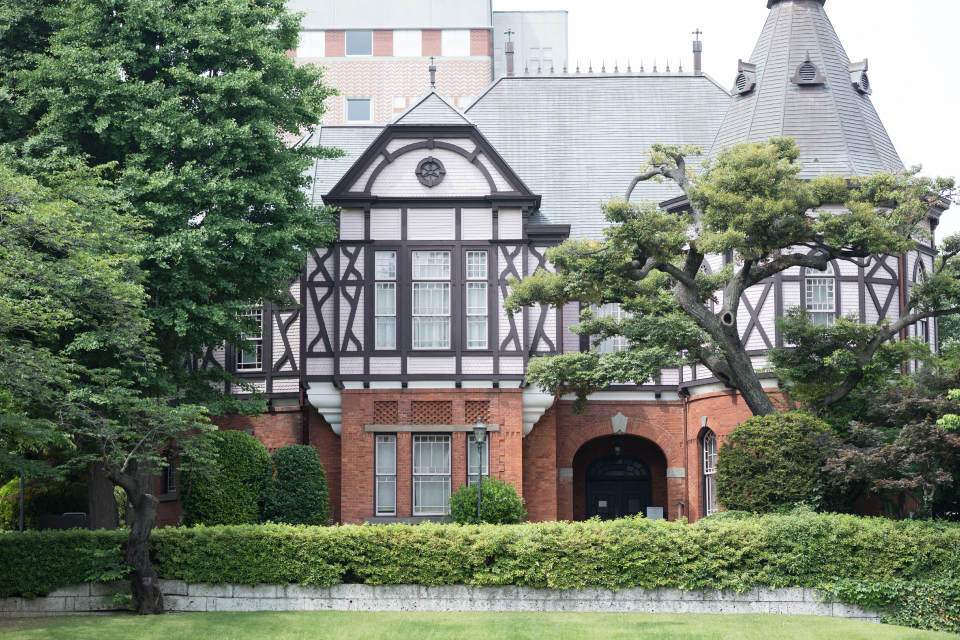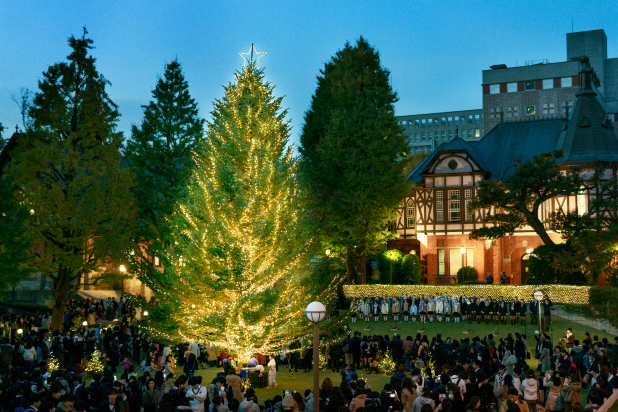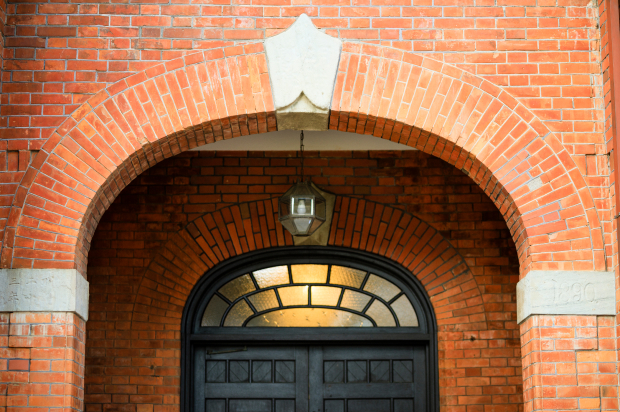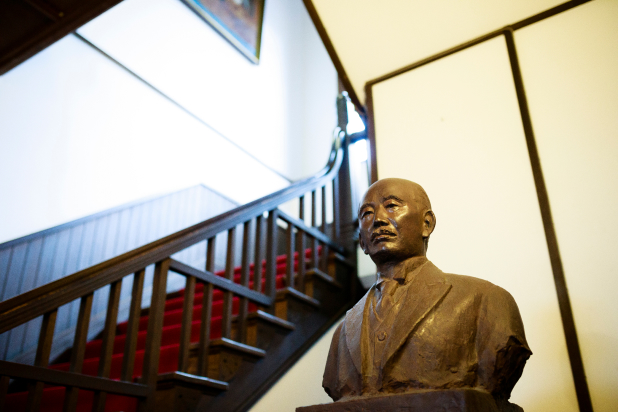Historical buildings
Please contact the Chancellor's Office Office (Tel: 03-5421-5230) if you wish to feature any of these buildings in media coverage.
Meiji Gakuin Chapel
Originally completed in 1916, the chapel was subsequently extended with transepts at each side. The pipe organ at the rear of the second floor was painstakingly built over the course of 12 years using historical construction methods.
(The chapel has been designated a Tangible Cultural Property of Minato City and was designated an Historic Building of Particular Importance to the Landscape by Tokyo Metropolitan Government in FY2002)
1989 Appointed as tangible cultural properties of Minato City
2002 Appointed as historic landmarks especially important for the landscape
[Built] 1916
[Architect] W.M. Vories
[Architecture] Brick(with some reinforced concrete)
[Size] 2F, Total floor area 553.61 sq. m.
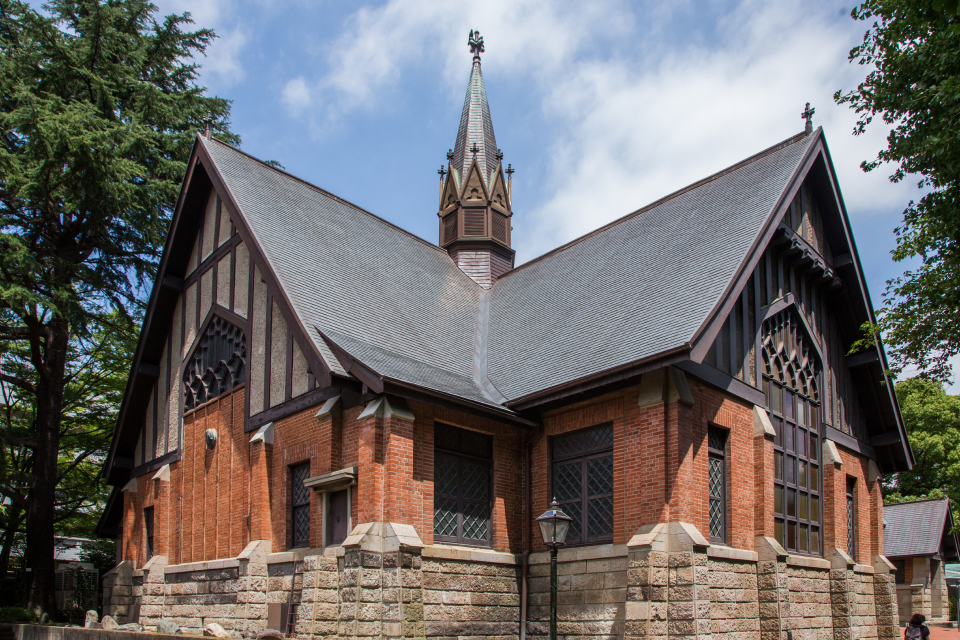
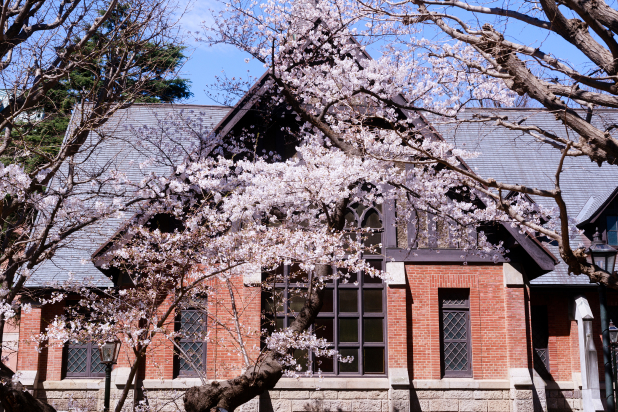
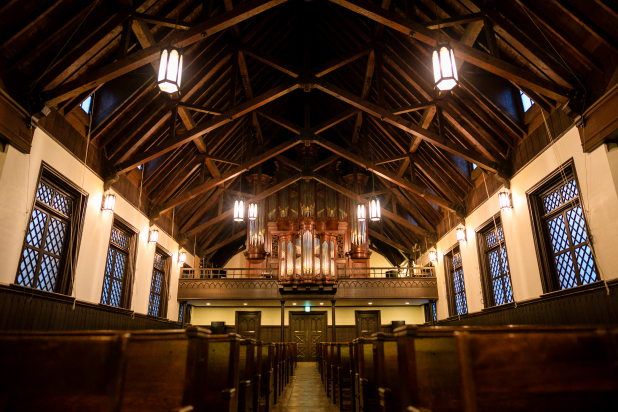
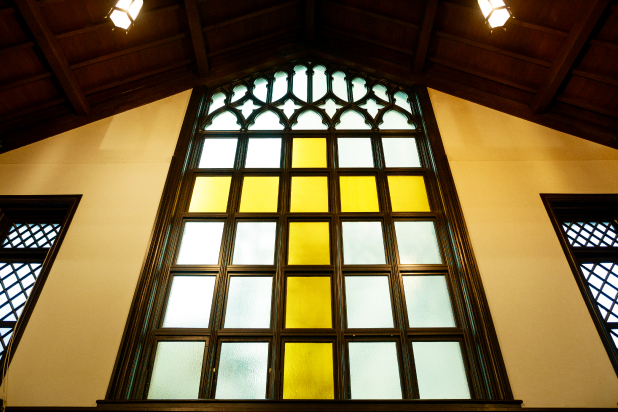
Meiji Gakuin Imbrie House
Built around 1889, this precious example of historic architecture is one of the few remaining early missionary houses in Japan. It was originally the residence of Dr. William Imbrie. In 1995, a two-year project to restore the building using the original materials began. (The house is a nationally designated Important Cultural Property and was designated an Historic Building of Particular Importance to the Landscape by Tokyo Metropolitan Government in FY2002)
1998 Appointed as nationally-important cultural property
2002 Appointed as historic landmarks especially important for the landscape
[Built] 1889
[Architect] Unknown
[Architecture] Wooden (Roof: Copper Straight line tile)
[Size] 2F, Total floor area 301.30 sq. m.
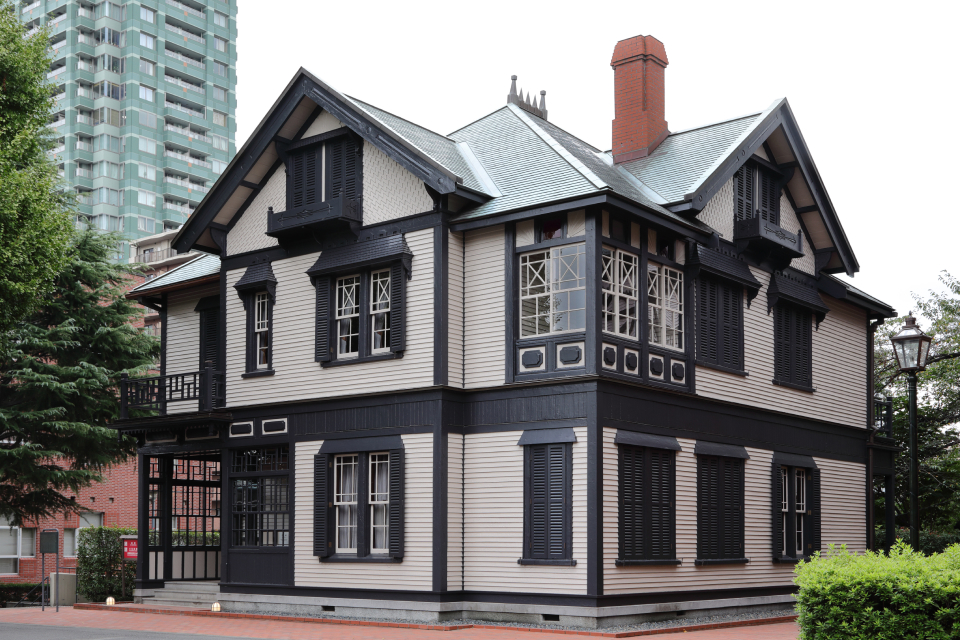
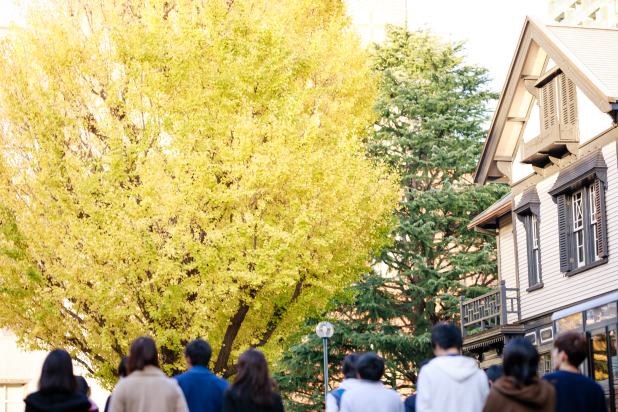
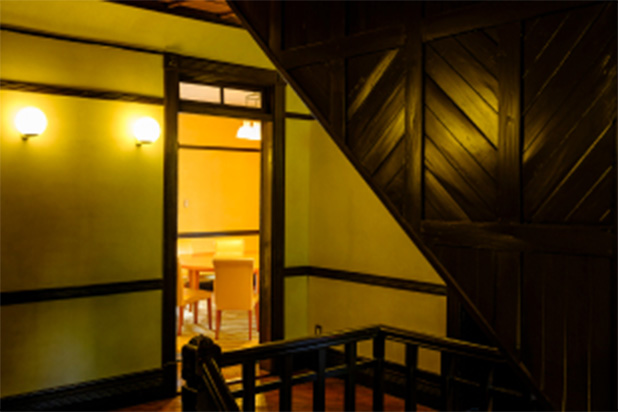
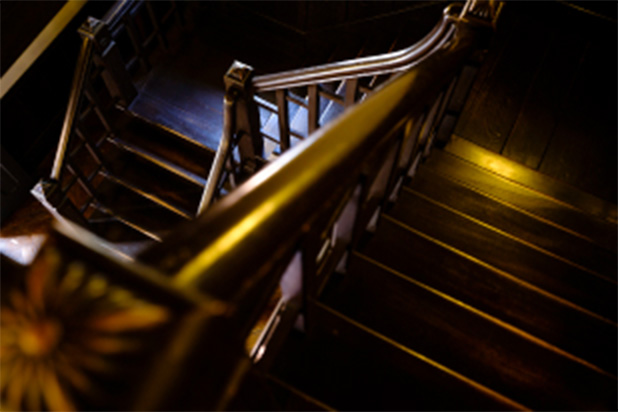
Meiji Gakuin Memorial Hall
Built in the neo-gothic style in 1890, this hall has a small chapel on the ground floor that provides a place for quiet contemplation. Its 19th-century reed organ with pedal board still sounds just as it did in the early 20th century. (Organ: designated a Tangible Cultural Property of Minato City. Building: designated an Historic Building of Particular Importance to the Landscape by Tokyo Metropolitan Government in FY2002)
1979 Appointed as tangible cultural properties of Minato City
2002 Appointed as historic landmarks especially important for the landscape
[Built] 1890
[Architect] H.M. Landis (assumed)
[Architecture] Brick (with some wooden parts) (Roof: Copper Straight line tile)
[Size] 2F, Total floor area 516.09 sq. m.
